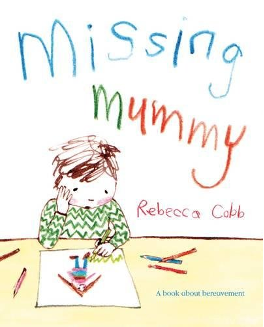
2021 VOL. 8, No. 2
Abstract: A small project of STEAM education called “Innovation for Love and Care” was implemented in a local secondary school in Hong Kong. Four seventh-grade students participated from November 2020 to February 2021. The project aims to integrate humanism into the traditional STEAM curriculum, to stimulate the students’ innovation in a people-oriented approach. The project consisted of three modules implemented by means of both online teaching and face-to-face lessons due to the COVID-19 pandemic. The responses of the students were very positive. The overall performance has been recognised by the school management team. For the next step, the project team plans to expand the project to all seventh-grade students.
Keywords: Hong Kong, humanities, interdisciplinary approach, STEAM education.
To respond to the challenges of the e-society, such as the labor workforce being replaced by machines and a lack of creativity, it is suggested that students should be equipped with the knowledge and skills of STEAM (science, technology, engineering, arts, and mathematics) (Anito & Morales, 2019). Educational authorities of different regions or countries have vigorously promoted STEAM education in the past ten years, so as to develop students’ problem-solving ability, communication skills, creativity and learning ability (Monkeviciene, Autukeviciene, Kaminskiene, & Monkevicius, 2020). These skills are necessary for students to prepare for their future (Hau, Cuong, & Tinh, 2020). Hammad (2020) found that school principals generally supported the implementation of STEAM education in their school (Hammad, 2020), which can help promote students’ creativity and enhance their competitiveness in their future careers. Although STEAM education has been highly valued, there is limited research on its teaching practices (Quigley, Herro, King, & Plank, 2020). Under this background, the project team established a small STEAM education project in Hong Kong CCC Kei Heep secondary school supported by the vice-principal, which is to integrate humanism into the traditional STEAM curriculum to stimulate the students’ innovation in a people-oriented approach. More importantly, this project aims to cultivate students with a sense of humanism — as a maker, we should have love and care. To explain, the invention of new products from STEAM education is to help disadvantaged people. The project was from November 2020 to February 2021, and the project team achieved initial results in cultivating students’ humanism. This paper shares those practical experiences with the educators.
Some people argue that STEAM education is more important than humanities education due to its practical values, however, humanistic heritage is also essential to create moral meaning for STEAM. That is, humanities education should not be ignored but should be placed in the same position as STEAM education. It is because humanities education can provide different insights for the students to understand the meaning of STEAM (Hartzell, 2017). Some scholars also opposed excluding humanities from the STEAM curriculum, since it could limit the intellectual development of the students (Kim, 2016). Fundamentally, the main purpose of STEAM education is to cultivate students’ ability to solve complicated problems faced by human beings (Madden et al, 2013). It means that STEAM education should be people-oriented and directed towards satisfying human needs. In fact, STEAM includes art education that can effectively help students develop creativity, and that creativity can be transferred to the innovation of technology (Hawari & Noor, 2020). For example, Macduff et al (2020) conducted a study in the arts and humanities approach (e.g., visualisation) to spark the innovation of nurses in handling the problem of antimicrobial resistance within the community and found that this project could help the nurses foster innovation in nursing practices. Therefore, integrating humanities education into the traditional STEAM curriculum can provide a basis for students to understand the needs of human beings (the goal of invention is to solve the problem faced by human beings) and to employ the skills from STEAM to develop people-centric and target-specific innovations.
The relationship between the sciences and humanities is mutually complementary. For instance, (i) the change of society affects the development of sciences; (ii) political change influences the focus of science research; (iii) nature inspires the philosophy thought of human beings and ethical problems related to science, etc. (Leftwich, 2002). This means that there are many meaningful connections between science and the humanities, and they can inspire each other to generate new knowledge. Interdisciplinary explorations can provide different perspectives for students to nurture new ideas. Essentially, STEAM is a kind of interdisciplinary exploration that can offer a medium to students for exploring social issues and increasing their awareness of the real world, which eventually helps them build up their innovation ability through those processes mentioned above (Guyotte, Sochacka, Costantino, Kellam, & Walther, 2015). Thus, if teachers can skillfully combine STEAM education with humanities education, students can understand STEAM knowledge more deeply and comprehensively, and then they can integrate what they have learnt in humanities into the innovations and creative ideas in STEAM.
The main objective of STEAM education is to enhance students’ ability to solve real-world problems, so that they can feel satisfied by contributing to others (Hong, Hwang, Szeto, Tai, & Tsai, 2016). More importantly, the students’ innovation cultivated by STEAM education should be connected to the real world, so that students can understand their responsibility to make a better world (Watters & Diezmann, 2013). The statements above emphasise that STEAM education should be people-oriented and that innovation in science is to improve our quality of life.
With this background, the project team discovered that most Hong Kong schools have tended to focus on the application of technology under the current STEAM curriculum, however, only a few schools have educated their students about the objectives of and attitudes in using technology. Because of this, the project team integrated humanities education into STEAM education, and launched a tailor-made project called “Innovation for Love and Care” to teach the students why we need to carry out innovation in technology (helping the poor and disadvantaged groups, making a better life for people, etc.) and what attitude should the makers have (ethical, caring, love, etc.). Through the open recruitment process, four seventh-grade students were recruited. They voluntarily participated in the course after school. Before the experiment, the project team discussed the contents and activities included in the project. After that, the project team invited experienced teachers in curriculum design to give suggestions to the project team, so that the course could be appropriately revised. Overall, this project involved three modules, with each containing five lessons (35 minutes per lesson). The first two modules were implemented in online teaching due to the class suspension during the COVID-19 pandemic. The last module was conducted through a face-to-face lesson, since the invention task was more complicated and more supervision for the students was expected.
Many picture books focus on civic and moral education since the readers can learn and reflect on the moral values in the content (Johansson, 2013). For example, some picture books explain the reasons behind the destruction of the natural environment, including economic, political, etc., and encourage people to maintain the environment, pursue justice and to befriend and ethically support the natural environment (Echterling, 2016). Therefore, three picture books were used as the teaching materials in this project for the part of humanities education. The first book was Missing mummy (Figure 1). In this story, a child whose mum had died was depressed initially but eventually overcame the difficult situation. The project team used this picture book to teach students to comfort the afflicted. The second book is The dead bird (Figure 2), which was about some kind-hearted children who discover a dead bird on the ground of the park. They all feel sad and hold a funeral for it. The students would learn how to show their love and care to all the things in this world. The third book is If I become a mayor (Figure 3), which was about a little girl meeting a woman who carried a baby on her back and searched for food from rubbish bins. The girl felt very unhappy and decided to run in an election for mayor, hoping to tackle the problem of poverty. The project team educated the students to take care of disadvantaged groups and help them maintain their daily life. The teacher-students discussion was implemented to deepen students’ understanding of the contents of the picture books.

Figure 1: The cover of Missing mummy
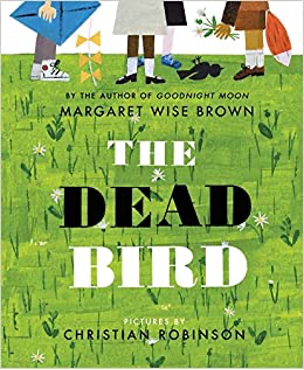
Figure 2: The cover of The dead bird
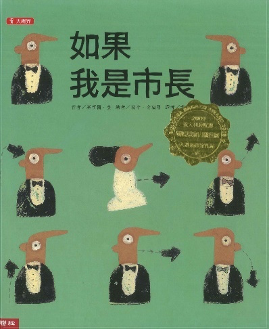
Figure 3: The cover of If I become a mayor
Drama, micro-writing and appreciation of Chinese popular songs were the main activities of of the art education part of this project. These art activities could spark the imagination of students so that they could fully understand the situation of the characters in the stories. As a result, they could also understand why using technology or inventing new products could help solve the problems of people in need.
In STEAM education students learned different STEAM knowledge to help the characters in the three picture books, respectively. For Missing mummy, the students learned the principle of an electronic circuit and applied what they had learned to make a luminous wish card for the child who lost his mum. When the card was opened, the light bulb glowed, signifying that the child could walk out of sadness and give himself hope. For the The dead bird, the students learned the principle of leverage, and used it to make a machine called “Birds Flying to Heaven”. It represented the sincere wish of the children: the hope the bird could rest in peace. For If I become a mayor, the students were taught the concept of “design thinking” and how to apply it in an invention. The specific practices were as follows: 1. Using the storyline of the picture book to trigger students' empathy for the poor; 2. Defining the real needs of the poor, e.g., lack of enough food; 3. Ideating: conducting research and developing works with which to address the needs of the poor; 4. Discussing which ideas could be more suitable; and 5. Creating a device called “The robot for watering” for the mayor in the story, which could be placed in a small space to automatically water the crops so that the problem of insufficient food for the poor would be relieved.
Figure 4 shows the course component of the project. To emphasise, the art education here was different from the “arts” of STEAM — it means promoting the innovative thinking of students. On the contrary, the “arts” of STEAM means using arts only to beautify the invented product.

Figure 4: The course component of “Innovation for love and care” project
In the first module, the students reported that they quite liked the lessons, because the picture book stories provided a background for the invention and they could understand the reasons for making such inventions. In addition, they found that the lyrics and melodies of the selected Chinese popular songs could powerfully resonate with them, particularly when facing the death of their beloved people. Some students thought that it was so meaningful to create a wish card with a light bulb (Figure 5) for the child who lost his mum because they could give him hope and let him find comfort in reading the wish card. One student indicated that it was amazing to apply the technical skills to make something that could give warm feelings to the afflicted.
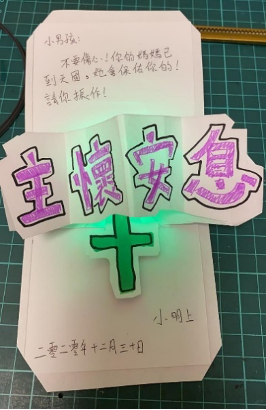
Figure 5: The luminous wish card
In the second module, the students reported that, after the lesson, they learned that they should be considerate to all the lives in this world. One student thought that the “Birds Flying to Heaven” machine (Figure 6) could help children concretise the good wish for the dead bird. Despite the good reasons for the invention, they indicated that it was not easy to make the machine, since they needed to balance the weight of the bird figure and the motor. However, they loved the task, since it was challenging for them. The machines made by the students were exquisite, which showed that they were willing to embellish the machine attentively.
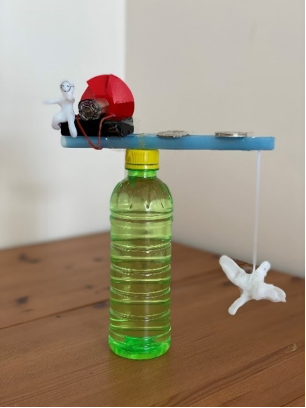
Figure 6: “Birds Flying to Heaven” machine
In the third module, the students collectively expressed that they loved this task very much, owing to having the freedom to design their own robot (Figure 7). The robot was connected to a sensor. If it detects a lack of water, it irrigates the plants (crops) automatically (Figure 8). The students indicated that sometimes the sensor was extremely sensitive, as a result, much water was released when moving the plants. Additionally, they understood that the main objective of the invention was to solve the problems faced by poor people and help them have a better life. Some students happily indicated that if they could invent this robot for watering successfully, many families in the cities could install the robot in their homes, so that they could produce some food for the poor. The students were satisfied by their invention, since they fully understood the reason for the innovation: improving the life quality of the disadvantaged group (Figure 9).
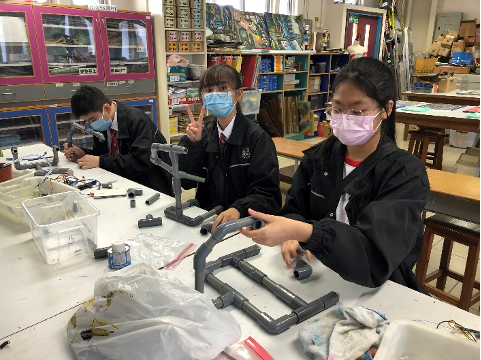
Figure 7: The students making their own robot
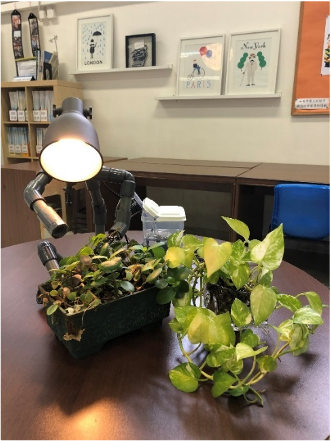
Figure 8: The robot for watering
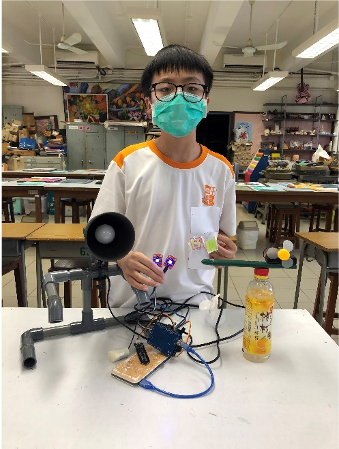
Figure 9: A participant with his invented products
There are some limitations to this project. Firstly, the number of recruited participants is extremely small due to a lack of funding (i.e., this project was self-financed by the project team); therefore, the result obtained in this project could not be easily inferred to all students in Hong Kong. Secondly, in view of the spread of COVID-19, the first two modules could only be implemented in online teaching, so the interaction between teachers and students was limited, and the teachers could not immediately fix the technical problems encountered by the students during the invention process. Thirdly, due to the limited teaching time and financial constraints, the project team could only implement three modules in total. Nevertheless, the preliminary result sheds some valuable insights: 1. The students understood the spirit of a “maker” (i.e., inventions for people in need and innovation for a better life quality for people); 2. The students learned basic technological principles and applied them to their inventions. 3. An interdisciplinary approach (humanities, arts and STEAM) was implemented to cultivate the design thinking of students, and the students’ overall responses were positive.
In future, the project team plans to continuously design cross-curriculum for STEAM, so that students can comprehensively understand the background of innovation and invention. On the other hand, the project team will try to apply for funding, so that the size of the project can be expanded to all seventh-grade students, or even all the students of the whole junior form. Moreover, the project team intends to invite other educators from different schools to form a professional community, so that different educators can share their practical experience there. Also, the educators can cooperate with a potential partner in implementing a new STEAM education project and integrate the resources which they have held, respectively, so that the resources can be used effectively. Lastly, the project team will think about how to strengthen students' creative ability and hands-on ability, so that they can be trained to create inventions independently anywhere.
Anito, J. C., Jr., & Morales, M. P. E. (2019). The pedagogical model of Philippine STEAM education: Drawing implications for the reengineering of Philippine STEAM learning ecosystem. Universal Journal of Educational Research, 7(12), 2662–2669.
Echterling, C. (2016). How to save the world and other lessons from children’s environmental literature. Children’s Literature in Education, 47(4), 283–299.
Guyotte, K. W., Sochacka, N. W., Costantino, T. E., Kellam, N. N., & Walther, J. (2015). Collaborative creativity in STEAM: Narratives of art education students’ experiences in transdisciplinary spaces. International Journal of Education & the Arts, 16(15), 1-39.
Hammad, S. (2020). School leaders’ perceptions about STEAM education to develop STEAM schools in Pakistan. LC International Journal of STEM, 1(4), 155-165.
Hartzell, R. (2017). STEM and the arts and humanities: Debunking a false dichotomy. Independent School, 76(2), 66-71.
Hau, N. H., Cuong, T. V., & Tinh, T. T. (2020). Students and teachers’ perspective of the importance of arts in steam education in Vietnam. Journal of Critical Reviews, 7(11), 666-671.
Hawari, A. D. M., & Noor, A. I. M. (2020). Project based learning pedagogical design in STEAM art education. Asian Journal of University Education, 16(3), 102-111.
Hong, J. C., Hwang, M. Y., Szeto, E., Tai, K. H., & Tsai, C. R. (2016). Positive affect relevant to epistemic curiosity to reflect continuance intention to join a hands-on making contest. Eurasia Journal of Mathematics, Science and Technology Education, 12(9), 2267-2279.
Johansson, V. (2013). “I Am Scared Too”: Children’s literature for an ethics beyond moral concepts. The Journal of Aesthetic Education, 47(4), 80-109.
Kim, P. W. (2016). The wheel model of STEAM education based on traditional Korean scientific contents. EURASIA Journal of Mathematics, Science & Technology Education, 12(9), 2353-2371.
Leftwich, G. M. (2002). Science and the humanities: The case for state humanities councils. Technology in Society, 24(4), 523-530.
Macduff, C., Marie Rafferty, A., Prendiville, A., Currie, K., Castro-Sanchez, E., King, C., ... & Iedema, R. (2020). Fostering nursing innovation to prevent and control antimicrobial resistance using approaches from the arts and humanities. Journal of Research in Nursing, 25(3), 189-207.
Madden, M. E., Baxter, M., Beauchamp, H., Bouchard, K., Habermas, D., Huff, M. ... & Plague, G. (2013). Rethinking STEM education: An interdisciplinary STEAM curriculum. Procedia Computer Science, 20, 541-546.
Monkeviciene, O., Autukeviciene, B., Kaminskiene, L., & Monkevicius, J. (2020). Impact of innovative STEAM education practices on teacher professional development and 3-6 year old children’s competence development. Journal of Social Studies Education Research, 11(4), 1-27.
Quigley, C. F., Herro, D., King, E., & Plank, H. (2020). STEAM designed and enacted: Understanding the process of design and implementation of STEAM curriculum in an elementary school. Journal of Science Education and Technology, 29, 499-518.
Watters, J. J., & Diezmann, C. M. (2013). Models of community partnerships for fostering student interest and engagement in STEM. Journal of STEM Education: Innovations and Research, 14(2), 47-55.
Authors:
Sin Fai Eric Ng specialises in Chinese Language and Literature education. He develops affective education at the secondary school level. He has worked as a Chinese Language teacher in secondary school since 2012. His current research interests include the teaching of Chinese popular songs and picture books. He is also interested in teacher training and pre-service teacher education. Email: ngsinfai@gmail.com
Chin Hung Ng specialises in arts education. He develops STEAM education at the primary and secondary school levels. He has rich experience in designing and implementing STEAM education. He is the author of a STEAM education textbook. He has been invited as a guest speaker for different seminars of STEAM education. Email: chinhung212@gmail.com
Cite this paper as: Ng, S. F. E., Ng, C. H. (2021). Reports from the field: Secondary school in Hong Kong integrating the spirit of humanities into STEAM education. Journal of Learning for Development, 8(2), 456-464.